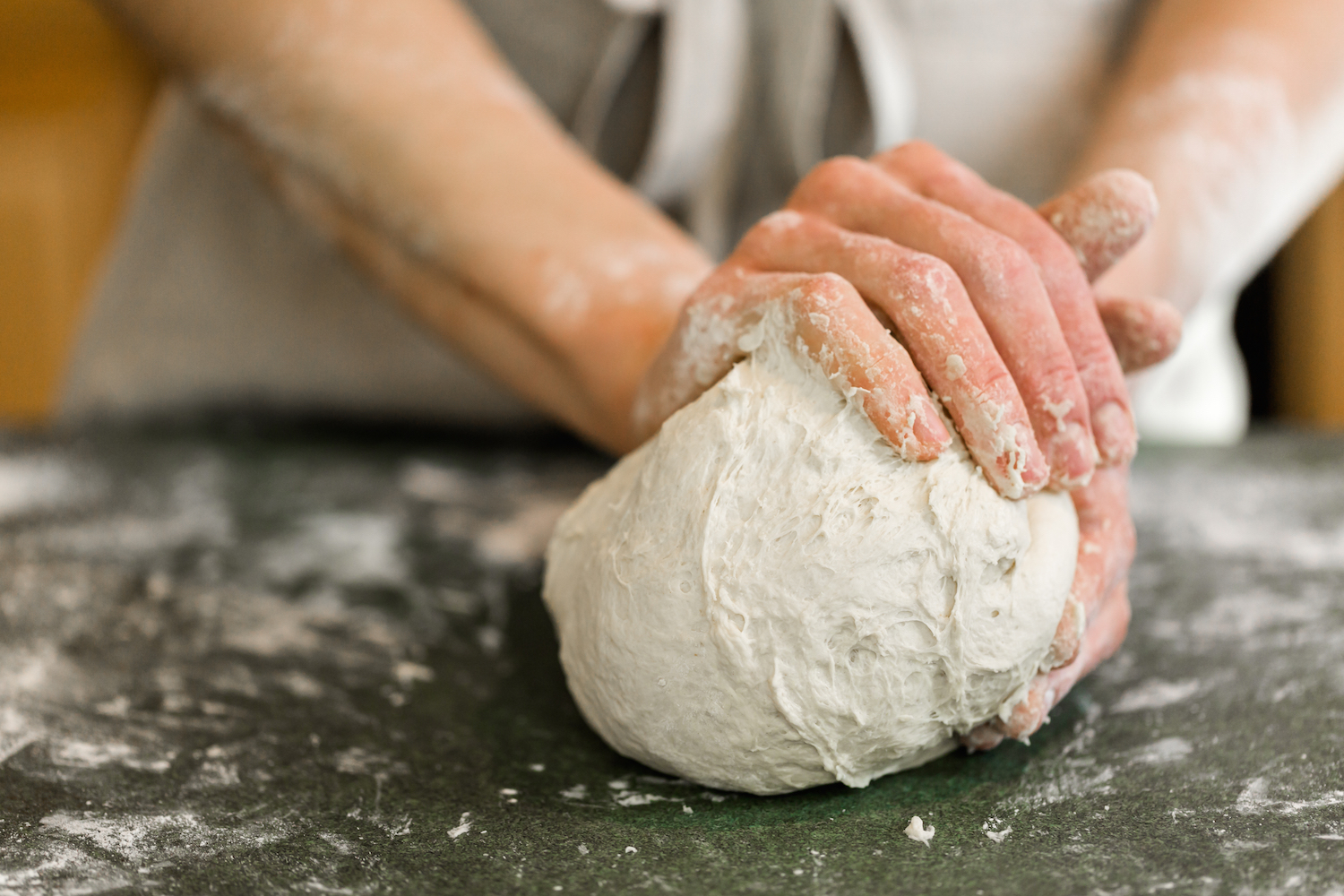
If you haven’t tried the goods from Superthing, you would’ve noticed the Insta posts of their amazing pink decor—but West End’s newest bakery isn’t just about the pretty interiors and perfect pastries! The Superthing team bakes up amazing loaves of organic, artisan sourdough daily, with varieties on offer including rustic fougasses, olive loaves, and seeded sourdough.
With breadmaking now the pandemic hobby of choice, we asked the team at Superthing to share some of their superpowers so we can all get closer to perfecting our loaves at home.
Start with your starter
A healthy starter is crucial to producing a good loaf. Unlike the fresh or dried yeast bought from a store which contains only one kind of yeast, sourdough starter is a mix of wild yeast and bacteria that live naturally around us.
To harvest it, prepare the microbes’ favourite food, which is a mix of flour and water (1:1), and place it on your kitchen bench. To avoid any unwanted visitors, add a small amount of pineapple juice to your mix. The next day, discard half of your starter and add the same amount again of fresh food (1:1 of flour and water). After a few days of feeding, you should see some slight bubbling on the surface of your starter. Congratulations—you have a new pet, but make sure to take care of it as it is alive!
If that sounds like too much effort, visit Superthing and add a jar of looked-after, ready-to-use sourdough starter to your coffee and croissant order.
Flour matters
The best flour you can find is organic, wholemeal stoneground bakers flour, and the easiest to learn with as a beginner will be a plain flour loaf. Once you have mastered the process, try to mix it up a little! If you want something extra in your bread you can try different combinations of heritage alternative wheat such as einkorn, spelt, or kamut.
If you’re keen to experiment with flours, you can purchase a range from Superthing (and the team is happy to answer bread-related questions!).
What is the best baking technique at home?
The secret to great bread baking is temperature and steam. If you have a cast-iron casserole dish you are halfway there. Now find yourself a good pair of oven mitts, as things will get hot!
A Dutch oven is the closest you will get at home to replicating a commercial setting. First, heat up the oven with the cast-iron dish inside to 250 degrees, then take your loaf out of the fridge and place on some baking paper. Score your loaf to allow the dough to expand in a controlled way when baking. If you can’t find a lame to score your loaf, then just visit your local art supply shop for a scalpel!
Gently lift your loaf together with the paper and place inside the pre-heated casserole dish, close the lid and return to the oven to bake. An extra hack to create even more steam is to very gently insert an ice cube between the paper and the dish, and then immediately close the lid.
My bread is very sour—how can I make it more subtle in flavour?
In your sourdough starter, the bacterial activity is mainly responsible for the acidic taste. After feeding your starter, the yeast starts multiplying first, and after a while, they slow down and are overtaken by the bacterial growth.
In order to have your bread tasting sweet and nutty (apart from creating your preferred mix of flours) you need to create a short-cycle feeding schedule for your starter. You will get great results with feeding it twice per day, but if that’s too much you can just feed it once per day—but it has to be regularly.
I want to take a break from baking bread, what do I do with my starter?
Keeping a starter can be similar to adopting a pet in that you need to attend to it every day, but there is a way you can have a holiday. Simply take a bowl of flour and a small amount of your starter, and start rubbing the flour and starter together in your hands (if the mixture is still wet add more flour).
Eventually, you will end up with something a little bit more sticky than sand, and that’s when your starter is ready to be hibernated (a little like the Australian hospitality industry right now…).
Pack your dry starter in an airtight container and place in the freezer. Once you’re ready to bring your starter back to life, prepare your 1:1 mix of flour and water, dissolve one part of your starter in five parts of the feeding mix, and begin the feeding cycle again.
Sorry, houseplants—we’re bread people now.


